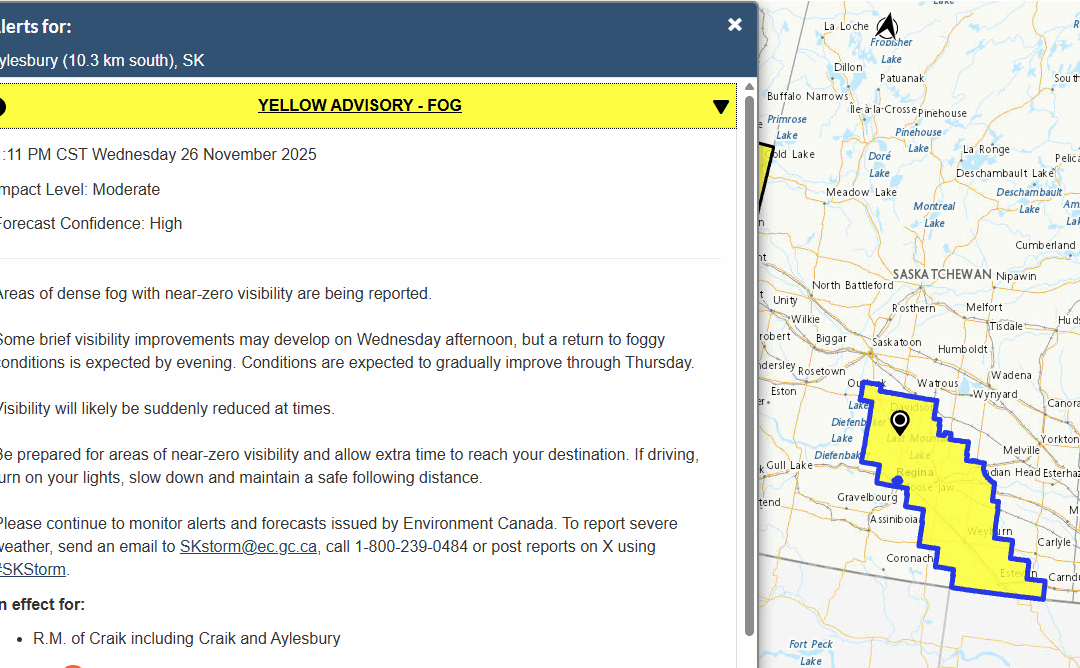Photo: Screenshot of Environment Canada Weather Information November 26, 2025
By Claire McFarlane
Local Journalism Initiative Reporter
Cabin Radio
Alerts will now come with a yellow, orange or red label to indicate the seriousness of an event.
The change is being made to make weather information and risk easier to understand at a glance, ECCC said this week, and to align with international best practices.
Yellow alerts will be issued when hazardous weather is forecast that could cause moderate or short-term damage or health impacts.
Orange alerts will be issued when severe weather is likely to cause significant damage or health impacts and the effect could last a few days.
While red alerts will be rare, they will be issued when there is a high probability of very dangerous and possibly life-threatening weather and the impact is predicted to be extensive and prolonged.
ECCC said examples that would have been red alerts include the ice storm that hit central Canada in 1998, the bomb cyclone that buried St John’s, Newfoundland under snow in 2020, and the atmospheric river that caused flooding in British Columbia in 2021.
To determine the type of alert issued, meteorologists at ECCC will employ a matrix that takes into account the confidence that a weather event will happen, as well as the likely impact.
The new colour-coding system will also apply to maps, to help the public decipher which parts of a region or the country will be hardest-hit by a weather event.
The current system of issuing alerts known as warnings, advisories and watches will continue alongside the new colour labels.
The new system is described as part of a broader effort to modernize the public weather program.
In the next year, a news release stated, ECCC will “launch a series of initiatives to improve severe weather alerts, add more context to daily forecasts and expected impacts, and extend the outlook for possible extreme weather, ensuring Canadians have the most accurate weather information when they need it most.”
